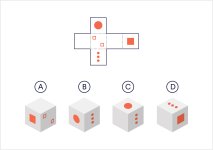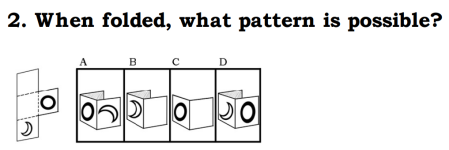JPastro4
Guest
- Reaction score
- 1
- Points
- 180
Quick Question to any recruiters out there, or anyone with any related knowledge.

So, I know that a pen or pencil and paper will be given with the test.
My is question is; for a spatial ability question like the one above. Would I be able to trace the shape and patterns on the piece of paper/s given, then turn it around and fold it/the piece of paper?

So, I know that a pen or pencil and paper will be given with the test.
My is question is; for a spatial ability question like the one above. Would I be able to trace the shape and patterns on the piece of paper/s given, then turn it around and fold it/the piece of paper?


